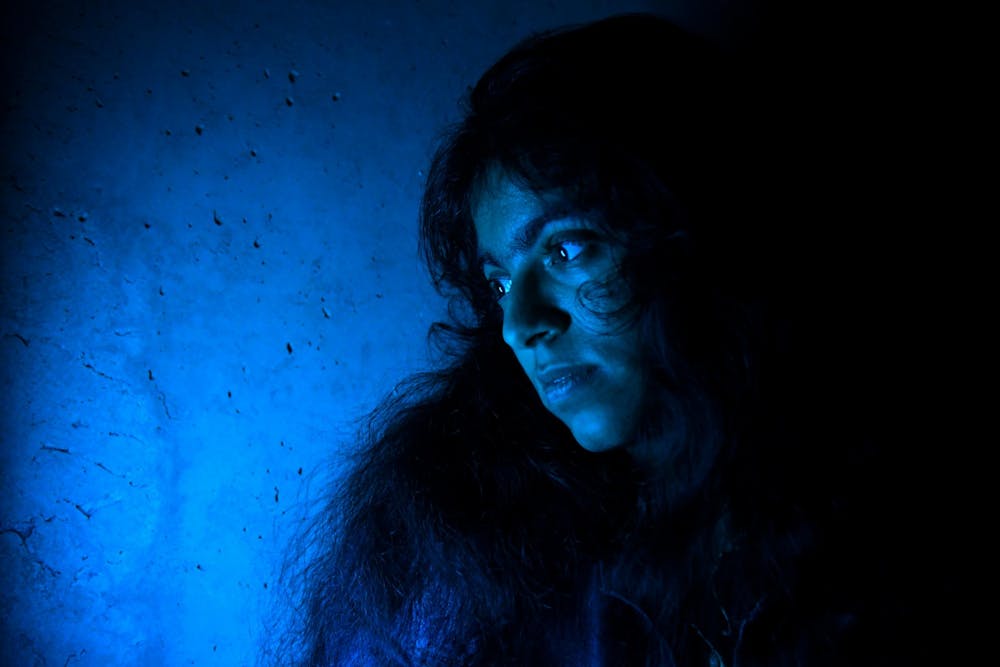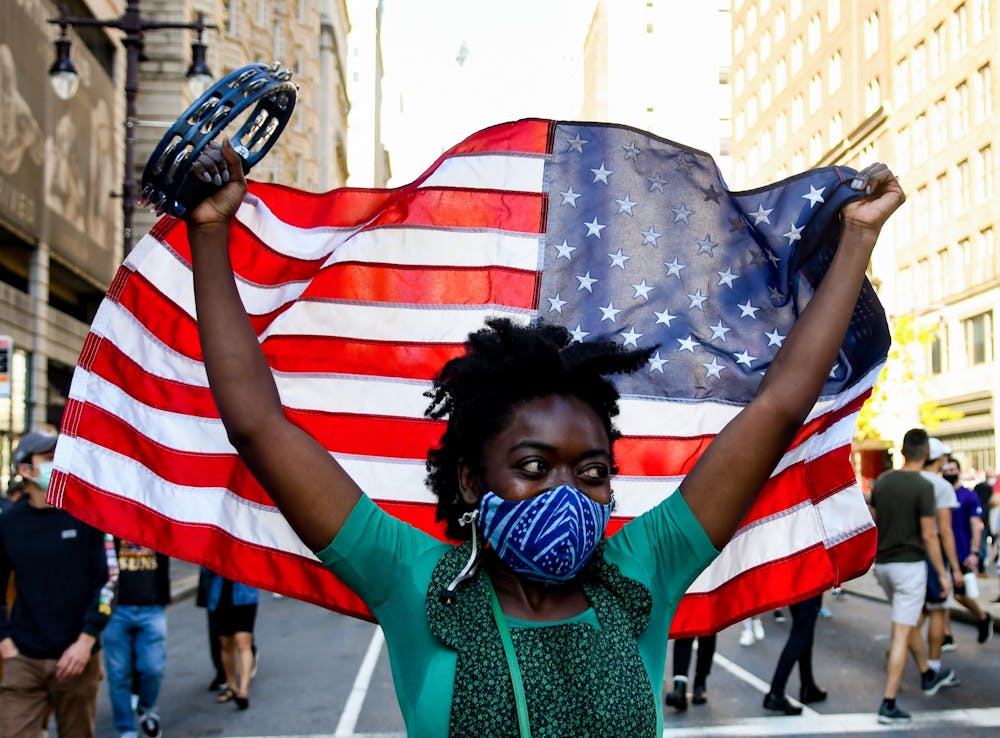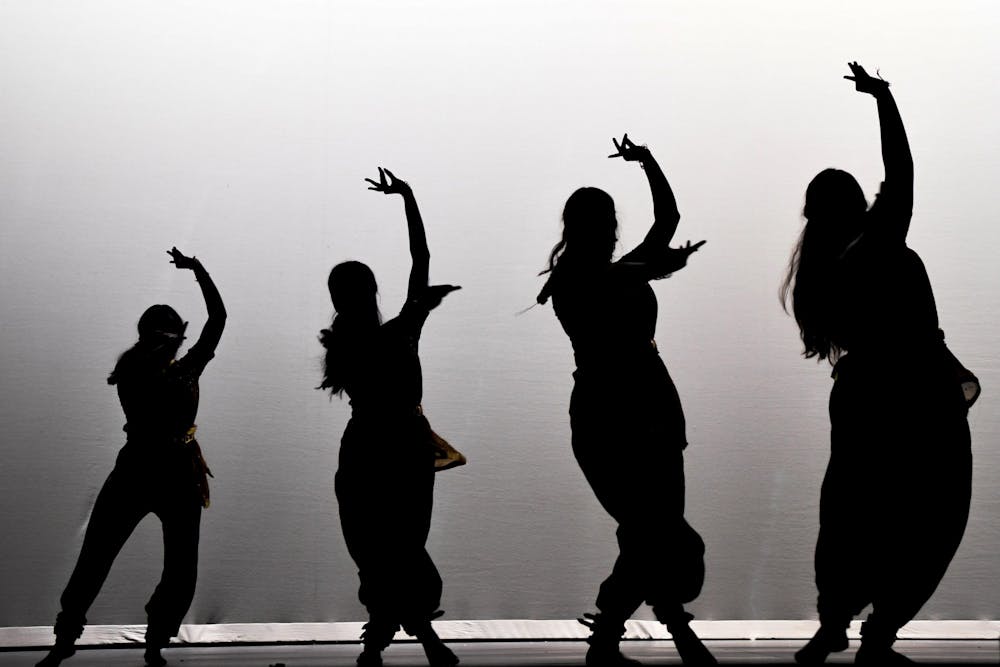
Photo from Sukhmani Kaur.
“Can I get a name for your order?”
These words sting with hollowness. I frantically wonder what to tell the barista, knowing they will mispronounce my Sikh name. “SK is fine,” I sigh. I pick up my peppermint hot chocolate — a good luck charm before my organic chemistry final — and notice the sharpie engraved on the cup: “E-S-K-E.”
I’m frustrated, but I keep walking toward the Vagelos building. I thought sharing my initials would waste less of my time and keep me from embarrassing myself once again. Stepping into the exam room, I dismiss this encounter as frivolous. This isn’t new to me. Yet, this mundane moment remains etched in my mind. I neglected to take ownership of what my name truly represents and let its power strip away from me.
ਸੁਖਮਨੀ. Sook-MUH-nee. Peace of mind.

Photo by Veena Kollipara
I can’t remember the first time I felt inner peace. I often find myself blending into the nearby environment. As a child, I avoided attending gym class, engulfed by the fear of the visibility of the thick black hair covering my skin. I hated stepping in front of a camera. Every strand of hair on my upper lip became much more noticeable to the world. When I found the avenue to hide behind a lens, I vowed to never look back.
Everyone hopes for college to be full of memories to reminisce about years later. When I first stepped on Locust Walk’s compass, I couldn’t find where to go. Through documenting the University of Pennsylvania and broader Philadelphia culture during my time at the DP, I felt an emerging passion for amplifying the voices of vulnerable communities through the lens of a Nikon D500.
Serving as the 136th photo editor for the DP during 2020 gave me the opportunity to visually delineate and connect the struggles of the separated Penn community. I aimed to instill a stronger sense of belonging in an isolating time through health care reporting and community-driven narratives. As the tumultuous year unraveled new wounds in the midst of a pandemic-altered election, I felt a greater responsibility to provide a more supportive platform to marginalized communities.

Since December 2020, 11.6 billion vaccines have been administered worldwide, granting many the golden ticket back to a semblance of pre-pandemic normalcy. Families reunited across countries. College friends survived online learning. Sports fans cheered feet away from athletes. Performers jumped back into sold-out shows, connecting their audiences with harmonies of unity, peace, and hope.

All of these moments inspired me to think outside of my own comfort and spark conversations with strangers.
I can’t picture the first photo I took with a camera. But I’ll never forget the time I first fell in love with photojournalism.
It was March 10, 2020. I walked up the steps in the main hall of the National Constitution Center and panicked. ABC. The New York Times. The Wall Street Journal. The Washington Post. I felt like an outsider seeping my way into a place I did not belong. I was one of a few Asian American journalists in the room. Everyone anxiously waited for hours before Dr. Jill Biden and President-Elect Joe Biden walked to the podium.

I felt lucky to be in the presence of a leader who would take the ropes of the highest office in our country. Why was I here?
If you love something enough, you’ll learn to make it work, even if it’s unconventional. A lot of people asked me why I voluntarily chose to spend most of my free time on the school newspaper. This job often required over 35 hours per week — time that often blurred into sleepless nights when instead, I could have been spending with my other pre-med friends. I felt displaced. For my DP friends, mostly liberal arts majors, it was difficult to understand the struggle. I battled with the uncomfortable idea that I was wasting my time on something that would never help me. That I chose the wrong path to take. That I should quit.
The camera became my outlet and recharged me when I felt depleted from Zoom classes. Spontaneous photo walks around the city gave me time to reflect on my personal image as a Sikh American woman.
I spent most of my senior year weekends photographing nearly every performing arts group on campus with my best friend Sage Levine. The jeering and mocking that once trailed behind me faded into a distant memory as I returned courtside.
Soccer. Football. Gymnastics. Basketball. Squash. The rules of these games became implanted on the back of my hand.
I do belong here.

If I could go back in time, I would tell myself to stop anglicizing my name. That loneliness is a divinity often mistaken for peculiarity. Healing takes longer than expected. I’m proud of the resilient woman I have become. People always ask me why I photograph. I aim to showcase authenticity in the life around me, even when it feels like everyone’s putting on a facade. The moments where I had a camera wrapped in my hands were honestly enough to teach me some of life's greatest lessons.
This is the peace I obtained during this chapter of my life.
One image at a time.
This column is dedicated to Ameek Bindra, Namrita Narula, Pia Singh and my other Kaurageous women. Thank you to my family and my closest life friends for their constant support of my work, patience, and time. I love you so much.
SUKHMANI KAUR is a graduating College senior studying biology with a concentration in neuroscience and a minor in Chemistry from Akron, Ohio. She served as the photo editor on the 136th Board of Editors, summer multimedia editor on the 135th Board and general assignments reporter afterwards. Her email is skaur22@sas.upenn.edu.
The Daily Pennsylvanian is an independent, student-run newspaper. Please consider making a donation to support the coverage that shapes the University. Your generosity ensures a future of strong journalism at Penn.
Donate







